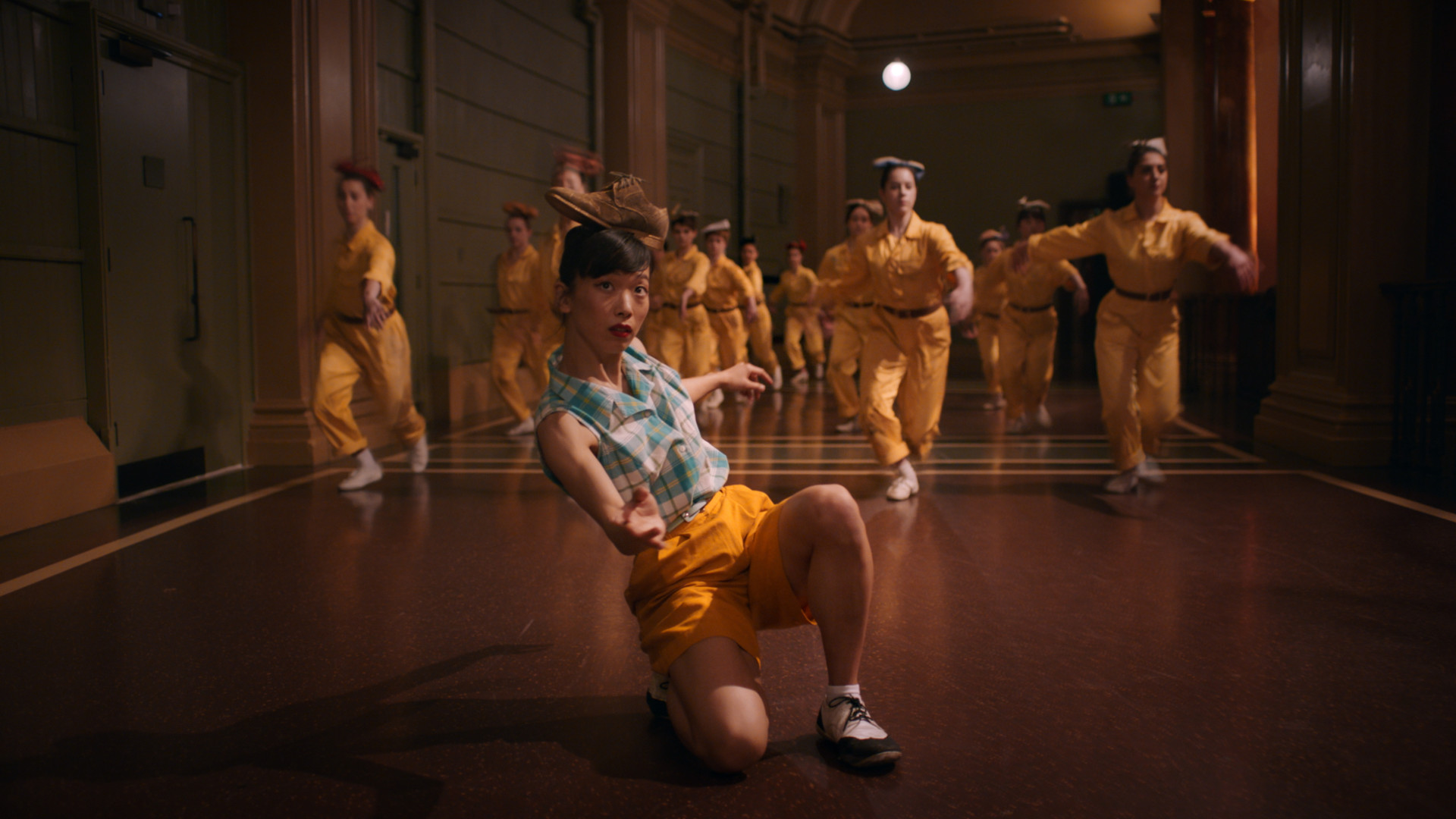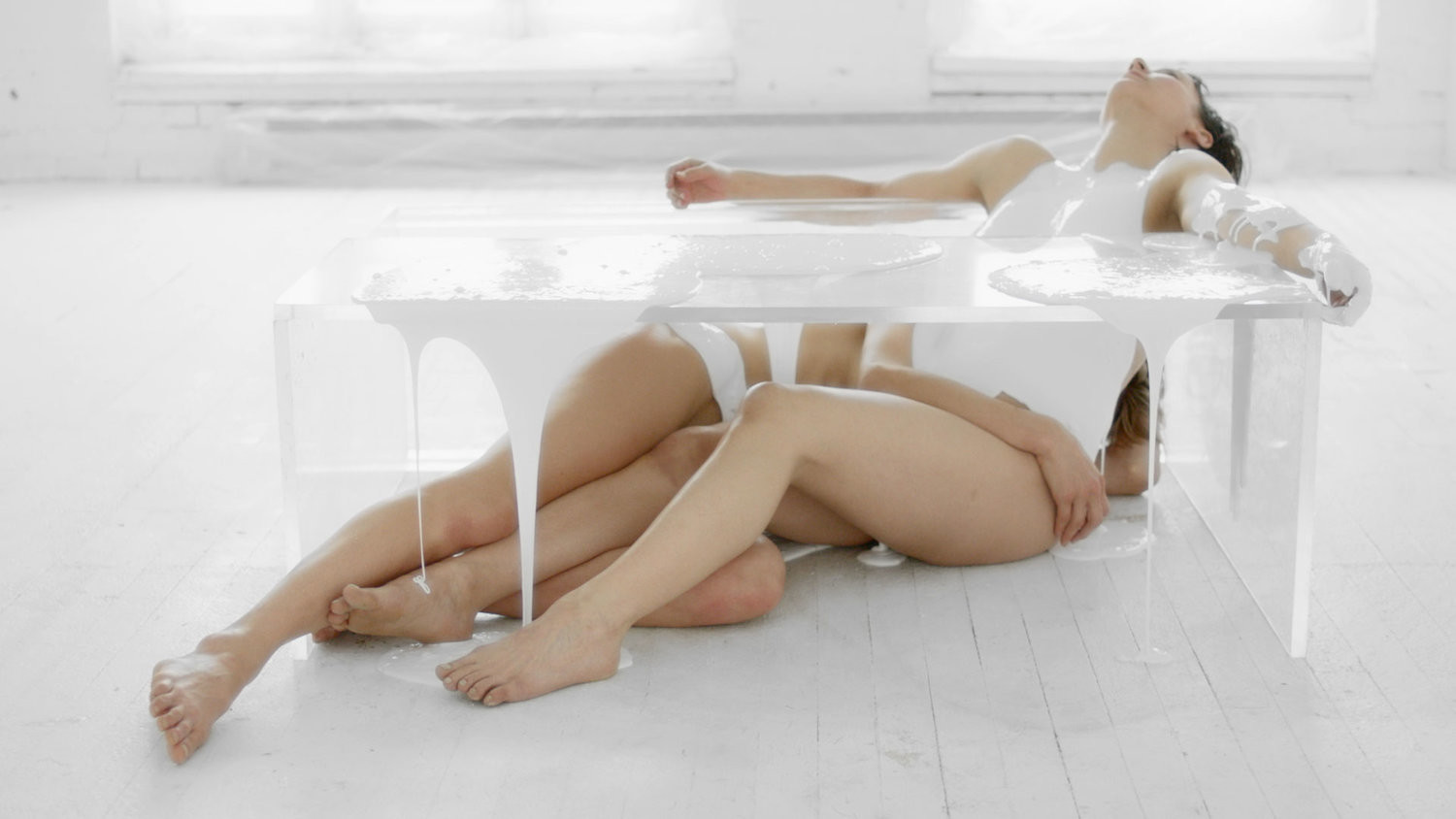Words by Angel Dust and Alice Minervini
Organised by The Place‘s MA Screendance students, Frame Rush is a two day festival exploring the intersection between dance and film. Curated by the students that are still doing the course, the festival brings in graduates of the programme alongside already established dance film makers and choreographers to present the contemporary manifestations of the screendance art form in order to articulate a more solid discourse about its potential and its future.
What we enjoyed about the festival was the diversity of featured content, the imaginative approach participants had in exploring what ‘screendance’ can possibly look like and achieve. Both narrative and non-narrative, the videos presented in the section “Graduate Screendance” addressed a wide range of themes and forms, from choreography in the everyday setting to archival footages from humorists characters, love stories to juxtaposition of the dancer body and brutalist architecture.
‘Concrete Kisses’ by Eloïse Mavronicholas was probably our favourite. Particularly impressive were two video essays; the first made a case for the inclusion of music videos as academically worthy material for analysis of contemporary society by claiming the artistic value of screendance. While the second video essay deconstructed the idea of urban dance as a variety of dance styles originating from different contexts of urban deprivation that has been appropriated and unified by the mainstream commercial scene. The rapper-narrator powerfully claimed a more idiosyncratic and diversified representation of these styles, and their heritage on contemporary dance. It was impressive how such videos pursued the possibility of making academic analysis of dance accessible to a wider demographic.

The next screening section “Unfolding Screendance” featured works by established artists that all employed the power of dance to explore both physical and emotional aspects of what it means to be a human. The chosen films were so well choreographed that words felt truly secondary to the movement. Taking us from Congo to Canada and from Finland to Tunisia, unfolding screendance unravelled how movement is what connects all of us across the world.
A few points for the festival to improve on would be the Q&A which could probe more deeply into the nature and future of screendance, its particularities, challenges and potential of the relationship between camera and dancing subjects – it felt a bit like an open day, more advertising of its community than speculative on its agency. Nevertheless, the festival triggered our curiosity and by trying to address the phenomenon of screendance they put in the spotlight the huge amount of screendance we already consume on a daily basis and participate in without even being aware of it. Thus, the interdisciplinarity of the MA that brings together an eclectic community of practitioners is a first, necessary step to enrich the spectrum of dance that we see on screen.
It is interesting to reflect on the contemporaneity of screendance in our life, especially now, as the festival happened just one week before the current lockdown in the UK. Lockdown has moved dance activities online; from dance classes to individual and collective practices on our screens. There is power in digital sharing and visual language. But let’s not forget the source of creativity comes from human connection beyond technology.
Header Image: Embrace of the Valkyries by Alan Lake.
